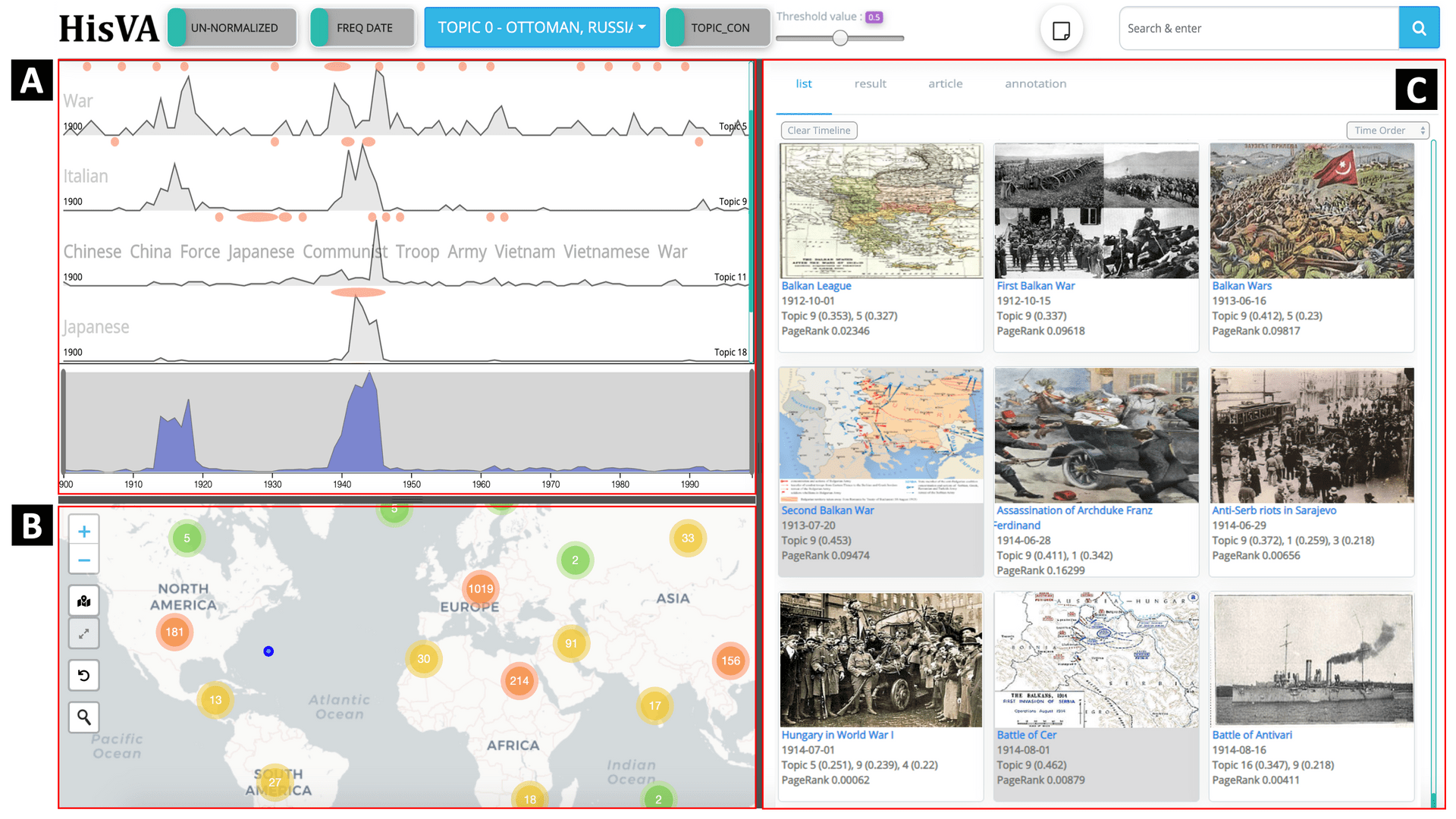HisVA: a Visual Analytics System for Learning History
Dongyun Han, Gorakh Parsad, Hwiyeon Kim, Jaekyom Shim, Oh-Sang Kwon, Kyung Son, Jooyoung Lee, Isaac Cho, Sungahn Ko
External link (DOI)
View presentation:2021-10-28T18:00:00ZGMT-0600Change your timezone on the schedule page
2021-10-28T18:00:00Z

Fast forward
Direct link to video on YouTube: https://youtu.be/ACWL_4yb5NA
Keywords
Visualization for Education, Event Visualization, Studying History, Wikipedia
Abstract
Studying history involves many difficult tasks. Examples include searching for proper data in a large event space, understanding stories of historical events by time and space, and finding relationships among events that may not be apparent. Instructors who extensively use well-organized and well-argued materials (e.g., textbooks and online resources) can lead students to a narrow perspective in understanding history and prevent spontaneous investigation of historical events, with the students asking their own questions. In this work, we proposed HisVA, a visual analytics system that allows the efficient exploration of historical events from Wikipedia using three views: event, map, and resource. HisVA provides an effective event exploration space, where users can investigate relationships among historical events by reviewing and linking them in terms of space and time. To evaluate our system, we present two usage scenarios, a user study with a qualitative analysis of user exploration strategies, and in-class deployment results